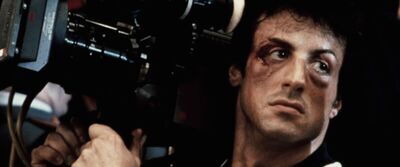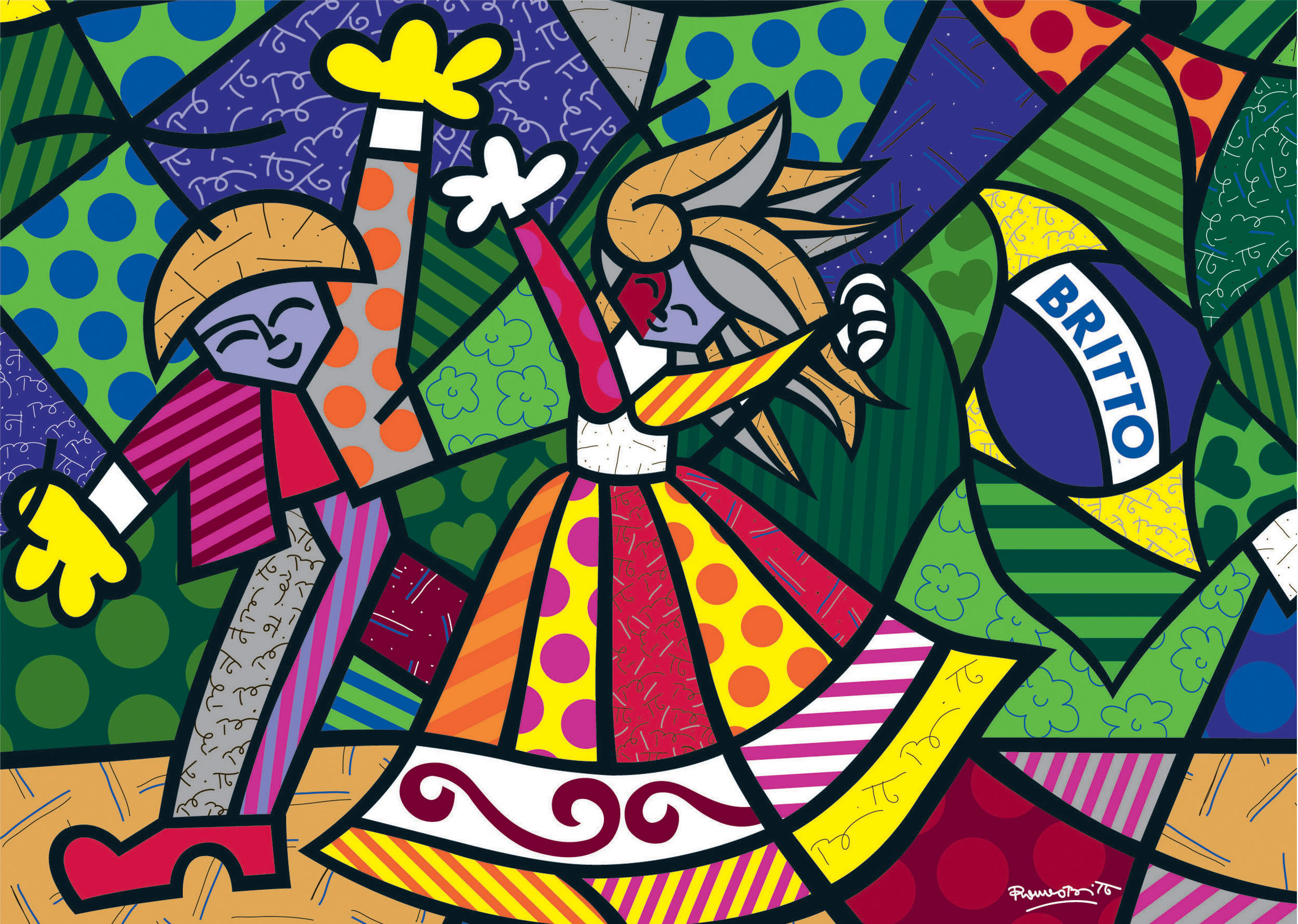
Sylvester Stallone has always been known for his physicality, but Thom Zimny’s documentary “Sly” confirms that it was his voice that made him a star.
Actually, as the movie makes clear, there are two voices, intertwined. One is the New York-accented baritone croak that Stallone speaks with, slurred by an accident during delivery that paralyzed parts of his face. The other voice is the one that comes off the pages of the scripts that Stallone writes (and, in many cases, rewrites—sometimes on the spot). Stallone has only been nominated for one major writing award, Best Original Screenplay for the first “Rocky,” which seems as much of a reward for creating his own Cinderella story in Hollywood as for the work itself. But as “Sly” demonstrates, every project Stallone touches becomes a Stallone film, even if it wasn’t intended as such. The words and stories and themes come from a personal place, whether he’s inhabiting human-scaled characters like the boxer Rocky Balboa and the meek sheriff Freddy Heflin in “Copland,” or playing jacked-up killers like super-soldier John Rambo, the snarling heroes of “Cobra” and “Demolition Man” and “Judge Dredd,” and mercenary Barney Ross in the “Expendables” series.
Everything he works on ends up sounding like him, either because Stallone made it sound like him or because younger writers who grew up watching his movies know how to write for him. For better or worse, there was never any mistaking his work for anybody else’s. And after an astounding fourteen-year stretch that contained the first five “Rocky” movies and three “Rambo films,” he kept reinventing himself, alternating red meat action flicks with attempts at farce (“Oscar,” “Stop! Or My Mom Will Shoot“) and romance (“Rhinestone“). Even Arnold Schwarzenegger—his only plausible rival for the 1980s and ’90s he-man cinema crown—tells “Sly” that he was in awe of Stallone’s ability to stay a half-step ahead of him even at the peak of his ambition and fame, and to have enough focus and drive to simultaneously wear four hats (actor, writer, director, producer) on signature projects.
“Sly” gives Stallone his due as a pop culture force and then some. Director Zimny is best known for his documentary and music video work for Bruce Springsteen. He brings a working-class-hero framing to Stallone as well, inviting him to revisit his tough childhood in Hell’s Kitchen, New York City, setting his legend in opposition to the nepotism and trust-fund babies who tend to dominate the entertainment industry, and threading his volatile and often painful relationship with his father Francesco “Frankie” Stallone, Jr. through much of the story. Stallone’s younger brother, actor/musician Frank Stallone, joins Sly in speaking frankly about their father’s seemingly unrelenting meanness—which, during the brothers’ adulthood, shifted from verbal and physical abuse to jealousy, undermining, pettiness, and cruelty. It all seemed to be driven by the pain of watching his children exceed him, a sight that would fulfill a dream for most parents.
He learned to play polo from his father, who took young Sly to Maryland after splitting from the boys’ mother, wrestling promoter Jackie Stallone, who brought Sly’s kid brother with her to Philadelphia, the setting for most of the “Rocky” series. The brief part of the film dealing with the separation of the brothers is so fraught with feeling and meaning that it could have been spun out into its own feature. The movie is powerful when it focuses on Stallone recounting the disappointments of his relationship with his father, usually in wry, understated language that only amplifies how awful it must have been for him.
Elsewhere, “Sly” is a frustratingly unrealized work, always hovering on the edge of real insight but rarely jumping into it. It was smart of Zimny to put Stallone front and center and let him guide the audience through his life with the same affable, eloquent, man-of-the-people energy that he brought to so many talk show appearances over the years. But the downside of that access, perhaps, is a film that seems to sand the rough edges off both Stallone and his movies.
‘Stallone was an uncouth palooka punchline for legacy Hollywood and the snarkier parts of journalism, which had to hurt him, and that seems even more unfair now than it did then. “Sly” barely touches on that, except to let Stallone and other interviewees call him an outsider or underdog without delving into what the words meant in context of an Italian-American New Yorker with a speech impediment who suddenly became rich and famous without learning how to be smooth and classy first. Nor is there much in here about Stallone’s marriages (save his third, which is treated glancingly) or his children, except for Sage Stallone, who died unexpectedly at 36. (Stallone says he regrets having put his work ahead of his parenting, and the moment is so affecting that one wishes the film had probed it a bit more.)
You can’t quite call “Sly” a deep dive into the work, either, unfortunately. It spends much of its first half getting to the original “Rocky” and sprints through most of the rest, with pauses for highlights like the “Rambo” films and “Copland.” And it elides some aspects of what Stallone’s career, in a larger sense, meant to 20th-century America. He was a poster boy for certain mindsets. It seems hard to imagine today with Rocky defined for younger generations as “Unc,” the crusty old mentor of Donnie Creed in the “Creed” series, and jocular action figure Barney Ross in the “Expendables” franchise, but the “Rocky” movies in the ’70s and ’80s were “issues” as well as films, as discussed for their racial politics as for their dramatic achievements. The “Rambo” series, meanwhile, started out as a wilderness survival tale with a traumatized Vietnam vet as its hero and hippie-hating backwoods cops and National Guardsmen as its antagonists, then took a reactionary right turn in 1985 with the second entry in the series, a P.O.W. rescue fantasy wherein Rambo killed bushels of Vietnamese and dozens of Russians. The “Rocky” series joined Rambo in Reagan-land that year with “Rocky IV,” which pitted Rocky against a gigantic, scowling blonde Soviet who seemed to have stepped out of a James Bond movie.
Throughout most of the next 15 years, Stallone became the anti-Springsteen, incarnating white ethnic grievance and reactionary fervor and joining Schwarzenegger, Clint Eastwood, and Bruce Willis in stumping for right-wing politicians. A 1985 Newsweek cover story headlined “Showing the Flag: Rocky, Rambo, and the Return of the American Hero” anointed him as the successor to John Wayne. It would have been fascinating to hear Stallone talk about all this with his customary humor and self-deprecating insight, but “Sly” doesn’t so much downplay politics as duck them, like Rocky avoiding a haymaker. (I’d bet good money that two of Zimny’s key interviewees, New York Times culture writer Wesley Morris and writer/director Quentin Tarantino, had plenty to say on all of these topics, whether or not Zimny asked for their opinions.)
There might be a spikier, more challenging movie somewhere in the deleted footage. Stallone gives great quote and is willing to go into controversial areas when interviewers encourage him. He was in his mid-seventies when “Sly” was shot and had recently done a feature-length documentary about his artistic process, “The Making of Rocky vs. Drago,” focusing on his belated re-cut of “Rocky IV,” which restored a lot of the character development he’d junked to shorten the film’s running time in 1985. That film will likely be more satisfying for devotees of Stallone the filmmaker and icon, as it goes more deeply into the nuts-and-bolts of filmmaking, image-shaping, and psychology, and provides as much personal insight. And oddly, although it’s very much Stallone’s movie, it feels less guarded, and less like an ad for a self-created brand.
On Netflix now.




